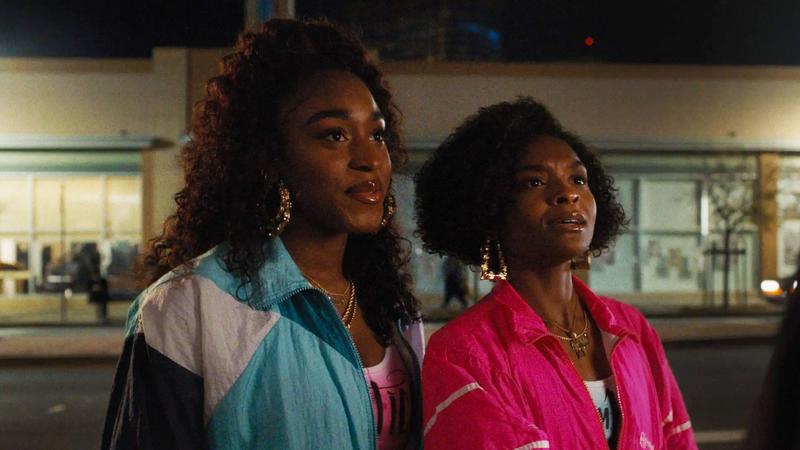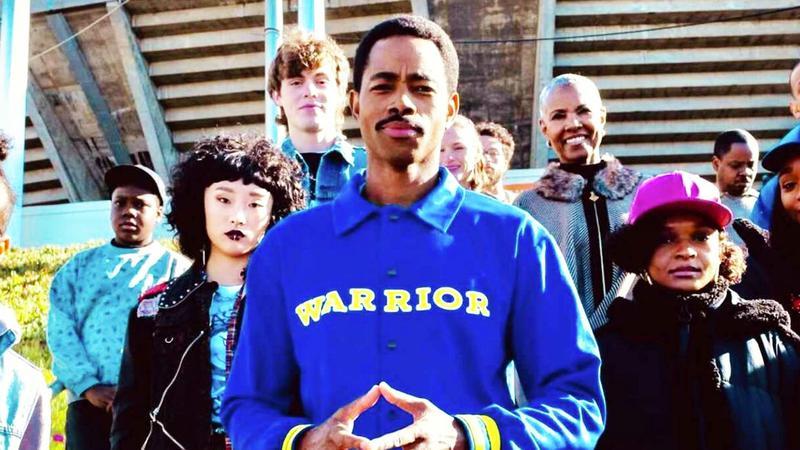
Freaky Tales may sport some whackier and supernatural plot devices, but a surprising amount of its story is, in fact, a true story, not a mere fiction. Captain Marvel directors Anna Boden and Ryan Fleck brought together an all-star cast for Freaky Tales, including Dominique Thorne, Pedro Pascal, Ben Mendelsohn, and Jack Champion. The Lionsgate-distributed action comedy sports an anthology format with four vaguely linked tales set in Oakland, 1987.
Freaky Tales hit theaters in April after a premiere in January at the Sundance Film Festival, and can now be found streaming on HBO Max. Freaky Tales' four chapters are linked through their themes of resistance, empowerment, and Oakland's rebellious community spirit, along with a cosmic neon-green supernatural energy found in various objects.
While most of these tales feature real people, events, and attitudes that were very much felt in 1980s Oakland, they are very much fictionalized and exaggerated for the big screen flick. And, as one would expect, there was no such strange green glow, as that appears to be more of a metaphor for this spirit of rebellion.
The Truth Behind Freaky Tales' Four Stories
Strength in Numbers: The Gilman Strikes Back

The music venue at 924 Gilman Street in "Strength in Numbers" is still open to this day, going by the Alternative Music Foundation. The Oakland venue has been called instrumental in '90s punk revival and has played host to Green Day and Operation Ivy, who did perform there in 1987 as is portrayed in Freaky Tales.
As the Gilman was known for its progressive and inclusive attitudes, it often fell victim to neo-Nazis, who were known to disrupt shows, incite violence, destroy equipment, and assault women. Fortunately, this faced strong resistance from the venue's punk crowd, who were even willing to fight for their more modern ideals.
Surprisingly, the punk vs. Nazi brawl outside the Gilman actually happened in 1987, stemming from an attack on a security guard. The character Greg, a security guard, is based on George Stephens, who, now 57, told KQED how he found his colleague beaten in a gutter outside the Gilman, leading to "an absolute mess:"
“And there were three Nazis standing over him, one holding a bat. So I grabbed the bat out of the guy’s hands and hit the three of them, got Nondo up, and got him inside. More people came out, and it turned into an absolute mess.”
While Lucid and Tina were created for Freaky Tales, they are based on the real punk community found in 1980s Oakland and the ideals they represented. Of course, this also means their romance was nothing more than a story decision, so fans will never know where their love would take them in subsequent years.
Freaky Tales may represent the politics and views found in '80s Oakland, but its directors explained to The Direct in an exclusive interview that it is "2025 and people still need reminding" that Nazis are bad.
Don't Fight the Feeling

Ironheart star Dominique Thorne and singer Normani star as Barbie and Entice, better known as Danger Zone. In "Don't Fight the Feeling, the Oakland-born female rap duo is invited to perform on stage with rapper Too Short, but are shocked by his misogynistic lyrics and win the crowd in an epic musical battle.
Interestingly, the real-life Danger Zone and Too Short did face off in the 1988 track "Don't Fight the Feeling," but an on-stage rap battle never materialized. While Freaky Tales changed the presentation to enhance the drama and conflict, the intense disses fired by all the artists involved are accurate to the released song.
According to KQED, Danger Zone was cousins Tamra Goins and Bailey Brown, the former of whom is now an L.A. talent agent, but in 1987, was just 15 years old. Just as the duo were hesitant to partake in the Freaky Tales rap battle, Goins explained they were "terrified" at boarding the song when invited by Short's manager:
"“We’re terrified, right? Because one, we’re kids. Two, Short was known to call people head doctors. I think I was still a virgin! So we just were terrified of what he could possibly say."
Ultimately, Danger Zone obliterate Too Short on stage and earn the respect of him and the crowd through disses over his breath, attitude, desperation, and manhood, all of which can be heard in the song on most major streaming services now:
- "When I say too short, you know what I mean
You see, I need a man, not a boy, to approach me." - "You're dreaming and scheming and fiending for my lust
You don't have enough, for you I feel disgust." - They call you 'Yuck Mouth'
You refuse to brush, no sweetheart, you can keep that kiss." - "You're a freak with no tale
You have no ass, class, you can't pass, you're simply trash."
Born to Mack

"Born to Mack" takes by far the least real-world inspiration in Freaky Tales, as there is no sign that Pedro Pascal's Clint existed to go through these struggles to exit a life and crime and "get out of the game."
That said, the tale's title, "Born to Mack," is named after rapper Too Short's breakout 1987 album, Born to Mack. The movie itself also pulls its name from one of the rapper's songs, "Freaky Tales," which hails from that album.
While Clint's efforts to free himself from a life of crime may be fictional, it could be considered representative of the crime-ridden '80s that hit Oakland hard, with increasing underworld economics hidden beneath the vibrant aesthetic.
The ever-busy Pascal was a staggering get for Freaky Tales, as The Last of Us star just found a new place as the heart of Disney's two biggest moneymakers.
The Legend of Sleepy Floyd

Freaky Tales' fourth and final tale stars Top Gun: Maverick star Jay Ellis as Sleepy Floyd, a real NBA basketball legend who played for the Golden State Warriors.
His adventure began when he was playing a record-setting game, which actually did take place in real life on May 10, 1987, where he scored 29 points in the fourth quarter to beat the Los Angeles Lakers. To this day, Sleepy Floyd still holds the record for the most points scored in a single quarter of an NBA game.
But that is mostly where the truth ends, as there is no evidence that Eric Augustus "Sleepy" Floyd's home was ever broken into, nor his wife murdered. As such, he, of course, never went on a revenge-fueled mission to take down her Nazi killers while utilizing supernatural martial arts skills.





!['Super Mario Movie 2' Just Revealed Bowser's Unexpected Team-Up With [Spoilers]](https://images.thedirect.com/media/article_thumbnail/bowser-marios.jpg?imgeng=/w_auto,280 280w)






